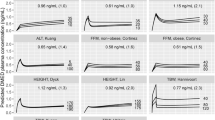Abstract
Pupil reactivity can be used to evaluate central nervous system function and can be measured using a quantitative pupillometer. However, whether anesthetic agents affect the accuracy of the technique remains unclear. We examined the effects of anesthetic agents on pupillary reactivity. Thirty-five patients scheduled for breast or thyroid surgery were enrolled in the study. Patients were divided into four groups based on the technique used to maintain anesthesia: a sevoflurane–remifentanil (SEV/REM) group, a sevoflurane (SEV) group, a desflurane–remifentanil (DES/REM) group, and a propofol–remifentanil (PRO/REM) group. We measured maximum resting pupil size (MAX), reduction pupil size ratio (%CH), latency duration (LAT) and neurological pupil index (NPi). A marked reduction in MAX and %CH compared with baseline was observed in all groups, but LAT was unchanged during surgery. NPi reduced within the first hour of surgery in the SEV/REM, SEV, and DES/REM groups, but was not significantly different in the PRO/REM group. Compared with the PRO/REM group, mean %CH and NPi in patients anesthetized with SEV/REM, SEV or DES/REM were markedly lower at 1 h after surgery had commenced. There was no correlation between NPi and bispectral index. Fentanyl given alone decreased pupil size and %CH in light reflex, but did not change the NPi. NPi was decreased by inhalational anesthesia not but intravenous anesthesia. The difference in pupil reactivity between inhalational anesthetic and propofol may indicate differences in the alteration of midbrain reflexs in patients under inhalational or intravenous anesthesia.


Similar content being viewed by others
References
Zafar SF, Suarez JI. Automated pupillometer for monitoring the critically ill patient: a critical appraisal. J Crit Care. 2014;29(4):599–603. doi:10.1016/j.jcrc.2014.01.012.
Larson MD, Behrends M. Portable infrared pupillometry: a review. Anesth Analg. 2015;120(6):1242–53. doi:10.1213/ANE.0000000000000314.
Behrends M, Niemann CU, Larson MD. Infrared pupillometry to detect the light reflex during cardiopulmonary resuscitation: a case series. Resuscitation. 2012;83(10):1223–8. doi:10.1016/j.resuscitation.2012.05.013.
Meeker M, Du R, Bacchetti P, Privitera CM, Larson MD, Holland MC, Manley G. Pupil examination: validity and clinical utility of an automated pupillometer. J Neurosci Nurs. 2005;37(1):34–40. doi:10.1097/01376517-200502000-00006.
Chen JW, Gombart ZJ, Rogers S, Gardiner SK, Cecil S, Bullock RM. Pupillary reactivity as an early indicator of increased intracranial pressure: the introduction of the Neurological Pupil index. Surg Neurol Int. 2011;2:82. doi:10.4103/2152-7806.82248.
Chen JW, Vakil-Gilani K, Williamson KL, Cecil S. Infrared pupillometry, the Neurological Pupil index and unilateral pupillary dilation after traumatic brain injury: implications for treatment paradigms. SpringerPlus. 2014;3:548. doi:10.1186/2193-1801-3-548.
Yuan D, Spaeth EB, Vernino S, Muppidi S. Disproportionate pupillary involvement in diabetic autonomic neuropathy. Clin Auton Res. 2014;24(6):305–9. doi:10.1007/s10286-014-0258-6.
Rollins MD, Feiner JR, Lee JM, Shah S, Larson M. Pupillary effects of high-dose opioid quantified with infrared pupillometry. Anesthesiology. 2014;121(5):1037–44. doi:10.1097/ALN.0000000000000384.
Belani KG, Sessler DI, Larson MD, Lopez MA, Washington DE, Ozaki M, McGuire J, Merrifield B, Schroeder M. The pupillary light reflex. Effects of anesthetics and hyperthermia. Anesthesiology. 1993;79(1):23–7. doi:10.1097/00000542-199307000-00006.
Leslie K, Sessler DI, Smith WD, Larson MD, Ozaki M, Blanchard D, Crankshaw DP. Prediction of movement during propofol/nitrous oxide anesthesia. Performance of concentration, electroencephalographic, pupillary, and hemodynamic indicators. Anesthesiology. 1996;84(1):52–63. doi:10.1097/00000542-199601000-00006.
Gray AT, Krejci ST, Larson MD. Neuromuscular blocking drugs do not alter the pupillary light reflex of anesthetized humans. Arch Neurol. 1997;54(5):579–84. doi:10.1001/archneur.1997.00550170055014.
Yan S, Tu Z, Lu W, Zhang Q, He J, Li Z, Shao Y, Wang W, Zhang M, Zheng S. Clinical utility of an automated pupillometer for assessing and monitoring recipients of liver transplantation. Liver Transpl. 2009;15(12):1718–27. doi:10.1002/lt.21924.
Taylor WR, Chen JW, Meltzer H, Gennarelli TA, Kelbch C, Knowlton S, Richardson J, Lutch MJ, Farin A, Hults KN, Marshall LF. Quantitative pupillometry, a new technology: normative data and preliminary observations in patients with acute head injury. Technical note. J Neurosurg. 2003;98(1):205–13. doi:10.3171/jns.2003.98.1.0205.
Bergamin O, Kardon RH. Latency of the pupil light reflex: sample rate, stimulus intensity, and variation in normal subjects. Invest Ophthalmol Vis Sci. 2003;44(4):1546–54. doi:10.1167/iovs.02-0468.
Guignard B, Menigaux C, Dupont X, Fletcher D, Chauvin M. The effect of remifentanil on the bispectral index change and hemodynamic responses after orotracheal intubation. Anesth Analg. 2000;90(1):161–7. doi:10.1097/00000539-200001000-00034.
Drummond JC. Monitoring depth of anesthesia: with emphasis on the application of the bispectral index and the middle latency auditory evoked response to the prevention of recall. Anesthesiology. 2000;93(3):876–82. doi:10.1097/00000542-200009000-00039.
Funding
Supported by departmental funding only.
Author information
Authors and Affiliations
Corresponding author
Ethics declarations
Conflict of interest
The authors declare that they have no conflict of interest.
Additional information
IRB: Faculty of Medical sciences, Kyushu University Institutional Review Board Clinical Research number #26-237.
Rights and permissions
About this article
Cite this article
Shirozu, K., Setoguchi, H., Tokuda, K. et al. The effects of anesthetic agents on pupillary function during general anesthesia using the automated infrared quantitative pupillometer. J Clin Monit Comput 31, 291–296 (2017). https://doi.org/10.1007/s10877-016-9839-3
Received:
Accepted:
Published:
Issue Date:
DOI: https://doi.org/10.1007/s10877-016-9839-3




